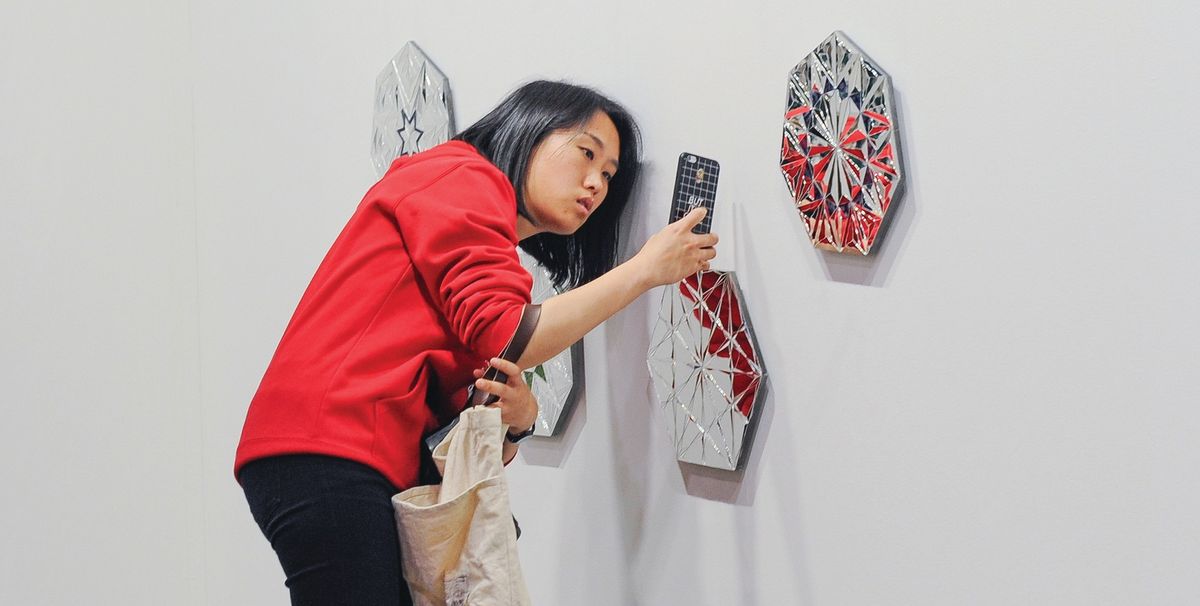Interest in Middle Eastern art in China is on the rise, if slowly. Though local and Western art remains dominant, China’s fast-proliferating museums are becoming more receptive to art from other regions, and this growing curiosity coincides with the rising international attention to the Middle East and its art. However, a preference for the established canon and safe names remains entrenched, and the shift is gradual. Last week, a showing at Shanghai’s Rockbund Art Museum of the Solomon R. Guggenheim Museum’s exhibition But a Storm is Blowing from Paradise, featuring works by 15 Middle Eastern and North African contemporary artists, was abruptly cancelled less than a month before its scheduled April opening.
Nevertheless, engagement between these two energetic emerging regions continues to proliferate. Art Basel in Hong Kong (ABHK) is bringing the region further into Chinese sights with a talk by Hoor Al-Qasimi, the director of the Sharjah Art Foundation. The Dubai-based gallery The Third Line is participating in the fair for the first time this year with a solo offering by the Iranian-American trailblazer Monir Shahroudy Farmanfarmaian. The gallery’s managing director Sunny Rahbar says she sees a growing interest in Middle Eastern art in East Asia, with Farmanfarmaian participating in the Gwangju Biennale in 2016. The London-based gallery Pilar Corrias sold a work by the Iranian-American artist Tala Madani, Thrown Light (2017), for $70,000 during the fair’s VIP opening on Tuesday.
Marc Spiegler, Art Basel’s global director, observes a maturing of Iranian galleries, with six showing at the most recent edition of Art Dubai. “In a year or two, we might see Tehran represented at ABHK, which would bring another dimension to the fair,” he says.
Significant numbers of Middle Eastern artists also joined last autumn’s Shanghai and Yinchuan Biennales; the latter featured Mohammed Kazem, Joana Hadjithomas and Khalil Joreige.
The New Normal, a show that opened last weekend at Beijing’s Ullens Center for Contemporary Art (until July 9) includes two Middle Eastern artists: Dubai-based Lantian Xie, who will participate in this year’s UAE Pavilion at the Venice Biennale and was in the last Shanghai Biennale, and the Qatari-American artist Sophia Al-Maria, participating in Shanghai Project (22 April-30 July).
“Both Lantian and Sophia are exceptional artists who are particularly interested in the impact of globalisation, and their practice reflects a mix that is both part of their identity formation and the culture of the Gulf, which to some degree echoes the transformation of China and its art world in recent decades,” says Alvin Li, a curator of The New Normal.
People are now “more aware” about the Middle East, says the Rockbund’s senior curator, Li Qi: “In the news and online, the topic is pretty hot.” Still, Middle Eastern art is rarely shown in mainland China, apart from a few artists in biennials and government-sponsored diplomatic shows emphasising the historical Silk Road. “The Silk Road is in the past, and the new one is still to be founded,” Li says.
Hong Kong remains ahead of mainland China, but “collectors in the region are expanding their horizons”, says Fabio Rossi, the co-owner of Rossi & Rossi gallery, which is showing photographs by the Iranian film-maker Abbas Kiarostami in the fair’s Kabinett section, and is staging an exhibition on the Iranian-American installation artist Siah Armajani at its gallery in South Island (until 15 April). “I think Hong Kong is a more open society, with more freedom to show work,” Rossi says. “There are issues that are common to both regions: identity, organisation, censorship and self-censorship.”


